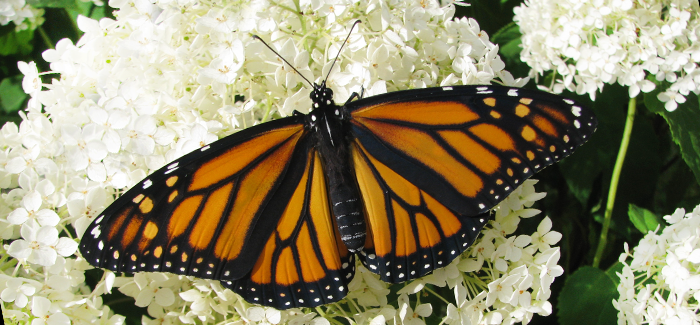
(University of Chicago Medicine and Biological Sciences)
Diverse neighborhoods help babies’ social learning; microbial fingerprints follow people from place to place; old-age insomnia is not always what it seems; and scientists trace the two genes the control monarch butterflies’ colors and their capacity to fly long distances.
Language lessons
Babies from diverse neighborhoods—who hear other languages in the park, on the bus, in the grocery store—are more apt to be open-minded in their social learning. In a study in the November Cognition, UChicago psychology researchers tested 19-month-olds’ openness to learning from someone who did not speak their native language. In a series of experiments, the infants, all native English speakers, were asked to imitate adults to learn new tasks, such as pressing a button to turn on a light or open a toy box. The researchers, psychology graduate students Lauren Howard and Cristina Carrazza, AB’13, and professor Amanda Woodward, found that babies from multilingual neighborhoods were more likely to accept the visual cues from Spanish-speakers than babies whose neighborhoods are more homogenous.
Microbe, my self
After six weeks of following seven families in their homes—18 people, three dogs, and one cat—UChicago microbiologists have a better understanding of the interaction between humans and the millions and millions of microbes around them. Participants in the Home Microbiome Project, led by Argonne and UChicago microbiologist Jack Gilbert, swabbed their hands, feet, and noses daily to collect microbial samples, and also sampled doorknobs, light switches, floors, and countertops. DNA analyses of the microbes’ species revealed how powerfully people colonize their surroundings. When families moved, within a day the new house looked—microbially— just like the old one. Couples shared more microbes than roommates, and noses carried more individual samples than hands. Published August 29 in Science, the study was coauthored by UChicago graduate students Sean Gibbons and Simon Lax.
Tight sleep
An estimated 30 percent of elderly Americans report having insomnia, but their problem may be less how long they sleep than how well. Analyzing data from more than 700 participants in a national survey who answered questions and wore wristwatch-like sensors that monitored their sleep patterns and movements, UChicago researchers found surprising results. The wristwatch actigraph data showed the average sleep period lasted 7.9 hours and that the average time spent asleep within a single period was 7.25 hours. Respondents who said they wake up often during the night had more total sleep time. Dissatisfaction with sleep, the researchers concluded, may be tied to other health concerns. Coauthored by sociologist Linda Waite, psychologist Martha McClintock, and public health sciences researchers Diane S. Lauderdale, AM’78, AM’81, and Ronald A. Thisted, the study was published online September 8 in Journals of Gerontology: Medical Sciences.
Butterflies and rainbows
Single genes appear to be responsible for the monarch butterfly’s capacity for migration and its colorful pigmentation. Ecology and evolution researcher Marcus Kronforst led a study published in October in Nature that illuminates the little-understood genetic sources of the monarch’s behavior and coloration. Migration is considered a complex action, but by sequencing and comparing the genomes of 101 butterflies—from migratory and nonmigratory monarchs and related species—Kronforst’s team identified one gene that influenced the muscle efficiency necessary to fly long distances. Another gene has a similar effect on coloration. A genetic mutation in a small percentage of the butterflies prevents pigment from reaching the wings, leaving them white instead of orange.
